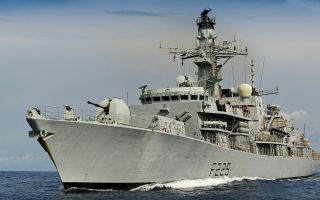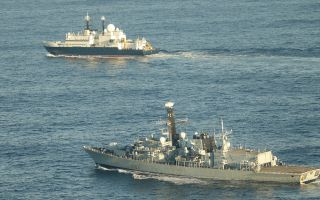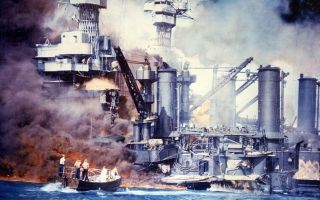Analysis: US responds to Houthi violence with measured amount of force - at least for now
Written by Richard White, who has UK military experience of operating in the Red Sea and the Gulf.
The US needs to remain cautious of the threat posed by Houthi rebels and of escalating tensions with Iran as it works with Britain and France to protect commercial shipping in the Red Sea.
Aircraft operating from the USS Eisenhower have shot down Houthi rebel targets in the region for the first time.
On Boxing Day, US Central Command announced that the destroyer USS Laboon and US F/A-18 Super Hornet aircraft had shot down 12 one-way attack drones, three anti-ship ballistic missiles and two land attack cruise missiles over the Red Sea.
This was the first involvement of US aircraft in the area, as previous Houthi strikes had been thwarted by missiles fired from UK, US and French warships.
F/A-18 aircraft have sophisticated radio and optical tracking systems and are believed to be capable of destroying drones and cruise missiles in flight.
Centcom's statement on social media platform X, formerly Twitter, did not specify what systems the F/A-18s targeted or where the two Houthi land attack cruise missiles were heading.
All previous land attack systems launched by the Houthis during the recent escalation in the region were targeted at southern Israel, and the Israel Defence Forces simultaneously announced one of their aircraft had shot down a drone over the Red Sea.
The USS Eisenhower carrier strike group is deployed on Operation Prosperity Guardian, attempting to deal with a highly complex situation evolving in the Red Sea and Gulf of Aden.
Operation Prosperity Guardian is led by Combined Task Force 153, run out of Bahrain in the Gulf, with the overall Combined Maritime Forces under command of a US 5th Fleet Admiral with a UK Commodore as Deputy Commander.
The primary threats are attacks from Iranian-backed Houthi rebels emanating from Yemen, which have resulted in a number of shipping companies diverting their vessels around Africa rather than risking a Red Sea transit.
Routing around the African continent can add up to 14 days in transit time and could eventually lead to an increase in global oil prices.
The focus of current operations is the Bab al-Mandeb strait, known as the BAM, at the southern end of the Red Sea.
This narrow choke point means that warships operating in the area have shortened reaction times and have to remain constantly at higher levels of readiness to react to threats.
The UK has Type 45 destroyer HMS Diamond, which has already been in action against Houthi drones, with the Type 23 frigate HMS Lancaster also operating in the Gulf of Aden.
In the BAM the US, UK and French warships have been using high-tech $2m missiles to destroy $20,000 Iranian attack drones.
This cost-trade-off benefits the cheap mass-produced Iranian one-way attack drones and will eventually lead to the coalition ships having to enter friendly ports to restock their missile supplies.
The coalition ships have close-in weapon systems such as Phalanx, but these are only intended as weapons of last resort.
Further complicating the situation was a drone attack on the merchant vessel Chem Pluto as it was approaching the coast of India on 23 December.
This represents a serious escalation which could lead to a confrontation between the US and Iranian navies as the drone could only have realistically been launched from Iran or from an Iranian ship.
It could also bring India into conflict with Iran, as the Indian government has said it will bring the perpetrators of this attack to justice.
There are also ships being held in Houthi ports on Yemen's Red Sea coast and there appears to be a reigniting of Somali pirate activity, with at least one hijacked ship, the MV Ruen, sat off the coast of Somalia.
It remains to be seen how long the US will allow the situation in the Red Sea to continue before taking direct action against the Houthis.
It is unlikely the Biden administration will want to do anything that ratchets up tensions in the region, but eventually a tipping point may come where the US has to send a message to Iran's proxies.
Any potential strikes could be carried out by shipborne Tomahawk cruise missiles. This happened previously in 2016 with US missile strikes on Houthi coastal radars in Yemen.
The Houthis will have learnt from this and are more likely to keep their systems mobile.
US F/A-18 Super Hornets flying from the USS Eisenhower could also strike targets in Yemen, but this would probably require the US aircraft initially suppressing the Houthis' Iranian-supplied air defences.
But the fact that the US aircraft were operating in that area shows they have a degree of confidence they can defeat the Houthi air defence systems.
A degree of caution is necessary, however, as Houthi air defence missiles have already shot down a US MQ-9 Reaper drone off the coast of Yemen on 8 November.








